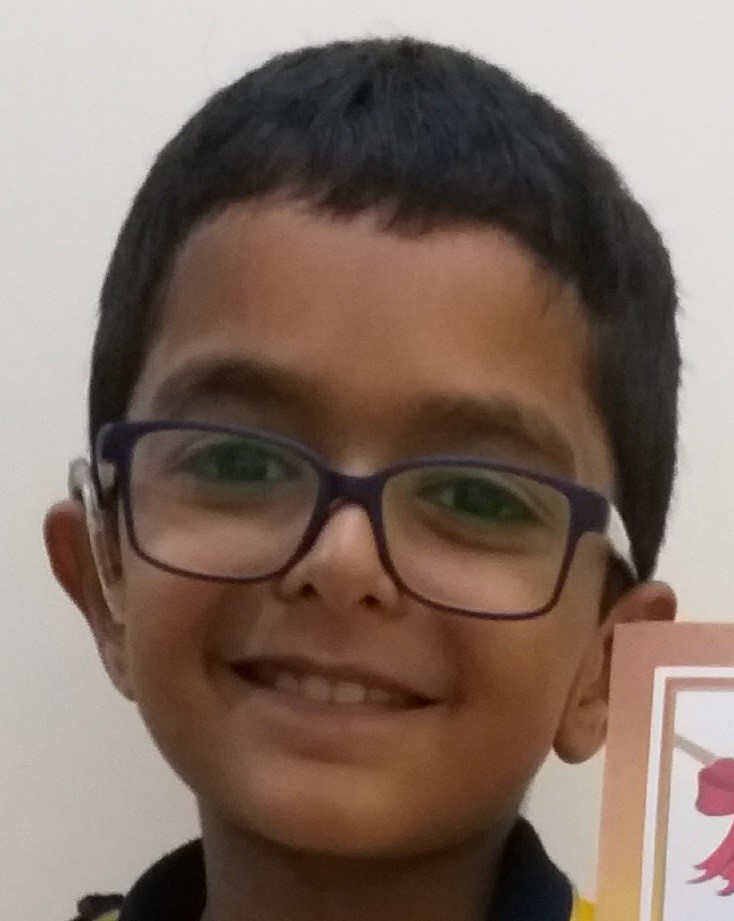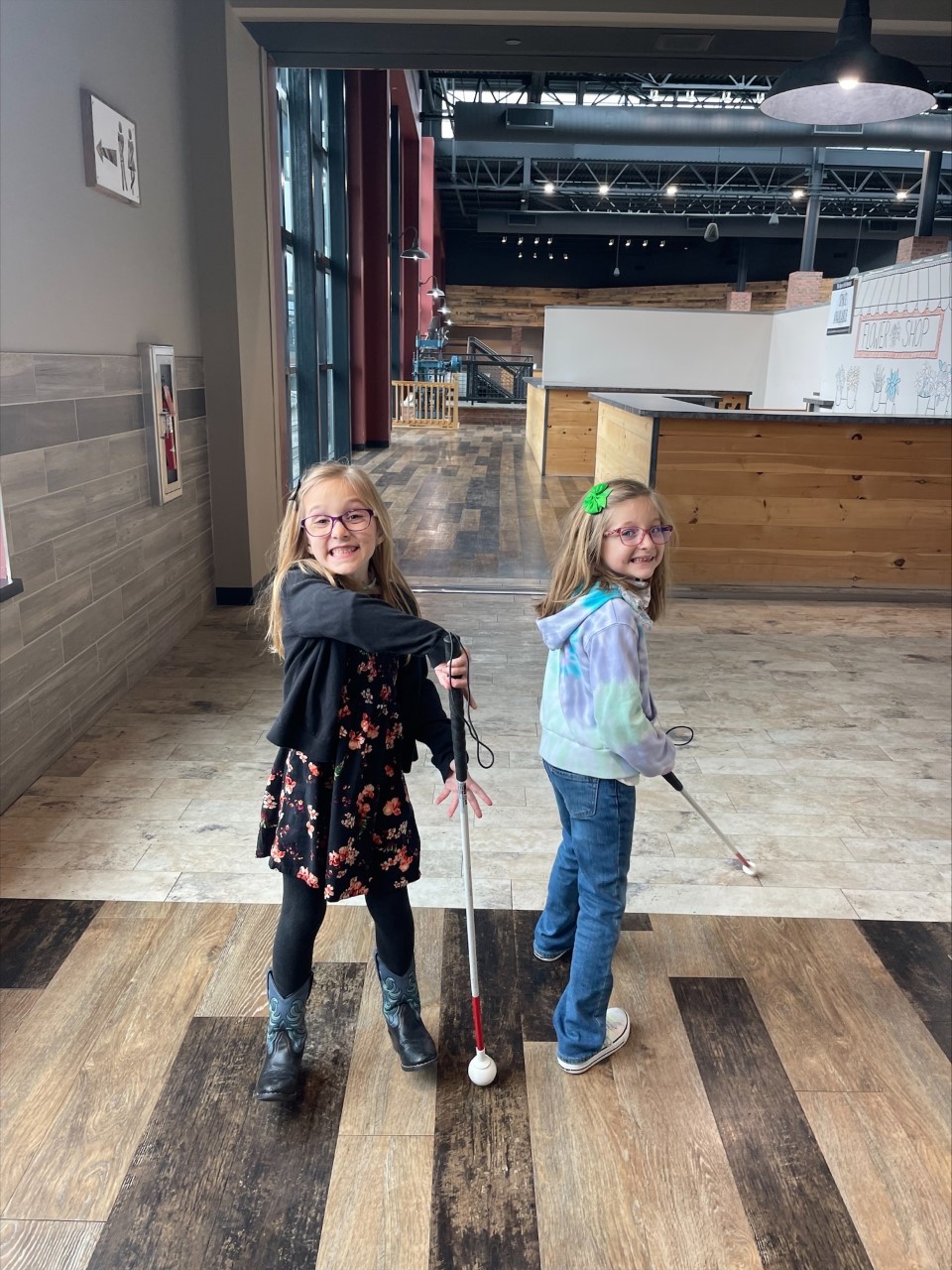Identification of Usher Syndrome: Information and Resources
By Nancy O'Donnell, Outreach Director, Usher Syndrome Coalition
February 2023
Named in 1914 after ophthalmologist and researcher Charles Usher (Riddell, 1941), Usher syndrome is the leading genetic cause of combined hearing and vision loss in the United States. It is estimated to affect 4 to 17 per 100,000 people overall, 3 to 6 percent of children who are deaf, and 3 to 6 percent of children who are hard of hearing (NIDCD, 2017).
Children with Usher syndrome, ages birth through 21, have historically been significantly under-identified. Delayed diagnosis can severely impact language development, the quality of educational experiences, and the ability of children and families to make informed choices about the future.
Fact Sheets: Support for Families
Types and Characteristics of Usher Syndrome
There are three main types of Usher syndrome, distinguished by age of onset, severity of hearing and vision loss, and the presence or absence of vestibular dysfunction (e.g., balance issues). Vision loss is due to retinitis pigmentosa, which causes night blindness (decreasing ability to see in dimly lit environments) and progressive loss of peripheral vision (NIDCD, 2017). Central vision often remains intact until later stages. Vision loss occurs gradually and at unpredictable intervals.

Usher Type 1
- Hearing loss is present at or soon after birth
- Profound hearing loss is common
- Vision loss typically begins in the first decade of life
- Vestibular dysfunction may cause low muscle tone and delayed sitting and walking in infants and balance difficulties throughout life
Usher Type 2
- Hearing loss is present at or soon after birth
- Moderate to severe hearing loss is common
- Vision loss typically begins in the second decade of life
- Vestibular system usually not affected
Usher Type 3
- Born functionally hearing and sighted with progressive hearing and vision loss
- Vision and hearing loss typically occur in the second decade of life
- Vestibular dysfunction with progressive balance issues in about 50% of individuals (Millán et al., 2011)
Diagnosis and Referral
Timely diagnosis of children with Usher syndrome as early as possible, and genetic testing to determine the specific type, are critically important so children can receive appropriate services. Once diagnosed, early intervention providers, educators, and state deaf-blind projects can help parents determine the services and supports available in their state. In addition, the Usher Syndrome Coalition can connect families with other families and Usher-specific resources nationwide.
State Deaf-Blind Projects
State deaf-blind projects are an important resource for all children who are deaf-blind, including those with Usher syndrome. The types of services offered vary from state to state, but typically include resources, guidance, and annual workshops or other events.
Genetic Testing
Genetic testing of children who are deaf or hard of hearing as early as possible is the surest way to diagnose Usher syndrome and other causes of hearing loss, and it is becoming more widely available and affordable (Brodie et al., 2020). Knowing the cause of hearing loss guides decisions about appropriate interventions and selection of organizations that will be most helpful to families.
Free genetic testing is available after a confirmed diagnosis of retinitis pigmentosa. Information is available from the Open Access Genetic Testing Program at the Foundation Fighting Blindness.
Typical Usher inheritance requires both parents to be carriers of the same Usher gene, and both must pass the Usher gene to their child. This type of inheritance is called “recessive.” A mutation in the same gene from each of the child's parents is necessary for a child to be born with the syndrome. In most cases, the parents are unaware that they are carriers, and the diagnosis of a child—first as deaf and then with progressive vision loss—usually comes as a surprise.
With each pregnancy of carrier parents, there is a 25% chance that the child will have Usher syndrome, a 50% chance that the child will only inherit one Usher gene and be a carrier, and a 25% chance the child will neither be a carrier nor have Usher syndrome.
Reasons Why Diagnosis May Be Delayed
Usher syndrome can go unrecognized, sometimes for decades, for a number of reasons:
- Families fail to get the support the need to access genetic testing.
- Children often naturally adapt to slowly progressive and subtle vision loss.
- Infants and children with Types 2 and 3 do not typically show signs of vision loss until their second decade of life.
- Because it is rare, many healthcare professionals and educators are unaware of the signs and symptoms of retinitis pigmentosa, the genetic retinal disease associated with Usher syndrome.
Although advances in genetic testing can now confirm Usher syndrome within the first year of life, it is sometimes vestibular issues, such as delays in motor development in children who are profoundly deaf as well as problems with balance, that prompt a suspicious parent or early intervention teacher to request genetic testing. Likewise, family members, teachers, and others may assume a child is just clumsy, awkward, or accident prone, but an accident or other event causes them to realize the child may be struggling with their vision.
Impact of Usher Syndrome
Vision and hearing loss associated with Usher syndrome impact many areas of development including communication, education, and planning for adult life. For these reasons, it's important to diagnose the condition as early as possible and begin providing education that addresses a child's needs in these areas (Usher Syndrome Coalition, n.d.).
Communication
Without intervention, early language deprivation in deaf or hard of hearing children can affect cognitive and linguistic development in potentially irreversible ways (Howerton-Fox & Falk, 2019). As such, parents of children with Usher syndrome face a number of important decisions early on regarding communication options to address their child's hearing loss (e.g., spoken language, sign language, assistive listening devices, cochlear implants). Likewise, parents need to consider the impact progressive vision loss will have on their child’s access to spoken and/or signed communication.
For example, an early diagnosis of Usher syndrome may influence a parent's decision to seek cochlear implants for their child and/or introduce sign language as a primary or secondary language as early as possible. Children as young as 9 months are candidates for cochlear implants (Cochlear Americas, 2020). Cochlear implantation at a young age allows parents the option to add aural/spoken language to their child’s communication repertoire. The ability to use sign language will allow the child to maintain communication access even as hearing loss progresses or if assistive listening devices are unavailable.
Education
A diagnosis of Usher syndrome justifies including a number of accommodations in an IEP to address progressive changes in vision (and possibly hearing) that impact learning (e.g., optimizing lighting, access to adaptive technology, preferential seating, the use of note-takers, interpreters, assistive listening devices, support from a teacher of the visually impaired and/or teacher of the deaf or hard of hearing, braille instruction, orientation and mobility training, extended travel time between classes, tactile sign language) (Fredericks, McGowan, & O'Donnell, 2017).
Planning for Employment and Adult Life
Adults with Usher syndrome may choose to attend college or trade school and find jobs in a myriad of professions. If the Usher diagnosis is delayed, a young adult could complete their education and choose a career path while unaware of their vision prognosis. This could seriously impact not only their safety but also their ability to remain in their chosen profession.
The Importance of Professionals in Diagnosis and Referral

Professionals in a variety of disciplines play a key role in diagnosing Usher syndrome and referring children to testing and support services.
Healthcare Providers
- Pediatricians and other healthcare professionals are the first, most frequent, and most consistent healthcare figures that the child will see throughout their youth. In addition to referring deaf or hard of hearing children for genetic testing, they educate parents about the functional and developmental implications of vestibular issues associated with certain types of Usher, discuss the importance of access to communication, and provide referrals to support services.
- Audiologists test infants who are referred after newborn hearing screenings. They address communication issues, encourage families to pursue genetic testing, and provide referrals to services.
- Genetic Counselors prepare families for the possible results of genetic testing and interpret the results of screening panels and genetic tests. They also provide information on the natural history of the disorder, risk assessment for family members, and referrals to organizations that provide services and support.
- Surgeons perform cochlear implants and may suggest genetic testing for children who are congenitally deaf due to an unknown cause.
- Eye specialists such as ophthalmologists (including those who specialize in retinal diseases), optometrists, and low vision specialists, conduct eye exams, help families prepare for their child’s vision loss (e.g., appropriate education), and provide low vision support.
Teachers and Related Service Providers
Most educators have never met a child with Usher syndrome. However, efforts by the Usher Syndrome Coalition are raising awareness of the condition and providing individual and family support. Likewise, an increasing number of professional development programs provide information and training for educational providers.
- Early intervention providers serve children ages birth to 3 with congenital or early-onset hearing loss. They may interact with children one-to-one or in small group settings and are trained to recognize developmental delays that may be caused by vestibular problems and support children's language development.
- Teachers and related service providers may notice that their deaf or hard of hearing student is sometimes clumsy or accident prone, that they miss visual information and environmental cues more often than their peers, that they struggle to keep up with classroom discussions, or that they are falling behind in school work despite support. These and other clues may warrant a discussion with the parents and student, including a recommendation of vision testing and genetic testing.
All service providers play an important role in referring families to their state deaf-blind project and other agencies or organizations that provide consultation and support.
Details from the National Deaf-Blind Child Count
Since 1986, NCDB’s National Deaf-Blind Child Count has provided extensive information on the population of children, ages birth through 21, who are deaf-blind in the United States. This annual count compiles information submitted by state deaf-blind projects about children who are eligible for their services. Those with Usher syndrome accounted for approximately 4% (420 out of 10,627) of children on the 2019 count.
Based on knowledge of the number of children in the U.S. who are deaf or hard of hearing and population estimates of individuals with Usher syndrome, the small number of children and youth with Usher syndrome on the child count indicates they are under-reported to state deaf-blind projects.
Although the National Deaf-Blind Child Count includes only a small number of children likely to have Usher, it provides useful information about those included on the count.
- Usher 1 is the most common type, followed by Usher 2 and Usher 3. This is different from published data indicating that Usher 2 is the most common type in individuals of all ages (Toms et al., 2020).
- A majority of children with Usher syndrome on the child count are 12 or older, even though it can be diagnosed with genetic testing in infancy.
- The average age of children with Usher syndrome decreased from 15 in 2010 to 13 in 2019, and the number under the age of 6 increased from 13 to 61, suggesting that children are being diagnosed and/or referred to state deaf-blind projects earlier than in the past.
- Since 2010, the number who have cochlear implants has doubled (in 2019, more than 55% had a cochlear implant).
- As compared to their peers who are deaf-blind from other causes, the majority of those with Usher syndrome graduate from high school on time with a diploma.

Number of Children with Usher Syndrome on the National Deaf-Blind Child Count
| Type | 2010 | 2015 | 2019 |
|---|---|---|---|
| I | 227 | 260 | 297 |
| II | 85 | 82 | 113 |
| III | 6 | 10 | 10 |
| Total | 318 | 352 | 420 |
Additional Resources
References
Brodie, K. D., Moore, A. T., Slavotinek, A. M., Meyer, A. K., Nadaraja, G. S., Conrad, D. E., Weinstein, J. E., & Chan, D. K. (2020). Genetic testing leading to early identification of childhood ocular manifestations of Usher Syndrome. Laryngoscope, 131(6), E2053-E2059. https://doi.org/10.1002/lary.29193
Cochlear Americas. (2020, March 18) Cochlear receives FDA approval to lower the age of pediatric cochlear implantation to 9 months.
Fredericks, C., McGowan, P., & O'Donnell, N. (2017, October 11). Educational considerations for students with Usher Syndrome [Webinar]. National Center on Deaf-Blindness.
Howerton-Fox, A., & Falk, J. L. (2019). Deaf children as ‘English learners’: The psycholinguistic turn in deaf education. Education Sciences, 9(2), 133.
Millán, J. M., Aller, E., Jaijo, T., Blanco-Kelly, F., Gimenez-Pardo, A., Ayuso, C. (2010). An update on the genetics of Usher Syndrome. Journal of Ophthalmology Ophthalmology, Volume 2011.
NIDCD, National Institute on Deafness and Other Communication Disorders. (2017). Usher syndrome.
Riddell, W. J. B. (1941). Charles Howard Usher, 1865-1942. Annals of Eugenics, 11(1), 309-313. https://doi.org/10.1111/j.1469-1809.1941.tb02295.x
Usher Syndrome Coalition. Frequent Questions. (n.d.).
Toms, M., Pagarkar, W., & Moosajee, M. (2020). Usher syndrome: Clinical features, molecular genetics and advancing therapeutics. Therapeutic Advances in Ophthalmology, 12, 1-19.